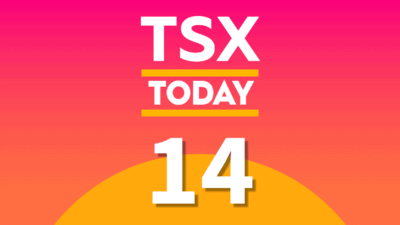Fellow fool contributor Joey Frenette recently wrote a piece highlighting Apple Inc. (NASDAQ:AAPL) as one of the very few value plays in an “absurdly expensive” U.S. stock market, saturated with “a tonne of passive-investment instruments, overcomplicating something that was invented to keep things simple and easy.”
While it is true that the U.S. market is expensive (and I agree on the thesis regarding Apple — it is my top pick overall in any market currently), it is important for readers at the Motley Fool Canada to get a good idea of how the major Canadian equity market (TSX) compares to its global peers and just how expensive it is compared to the U.S. and other global leaders.
U.S. market not a good comparison
First of all, I believe the U.S. market is not a good proxy for the Canadian market for a few reasons. First, and most obvious, is size and relevance to the global marketplace. Canada, like Australia or other countries of comparable size, accounts for a tiny fraction of the global equity market (Canada accounts for approximately 3% of global equities). Second, the Canadian market is heavily focused on mining, resource, and financials — industries that differ greatly from the key sectors in the U.S., such as technology and I.T., areas which inherently carry higher valuation multiples.
By using Australia as a good proxy for Canada, we can see that Canada’s stock market is approximately 12% more expensive than its counterparts down under.
Canada is actually more expensive than the U.S., using a “snapshot” metric rather than a cyclically adjusted one
Fellow Fool contributor Nelson Smith used the cyclically adjusted price-to-earnings (CAPE) ratio in a piece to show that Canada’s stock market is more expensive than that of the U.S. Here’s why I believe a trailing price-to-earnings (P/E) ratio makes more sense.
A trailing P/E ratio takes into consideration a snapshot of the previous 12 months of a given stock market and is not cyclically adjusted for previous years. The CAPE ratio takes 10 years’ worth of data and averages out the market over a long-term time horizon, skewing the data when one wants to compare how two markets are doing at this point in time. Given that the U.S. market has traditionally provided investors with higher volatility, valuation multiples, and returns over the years due to the unique makeup of the U.S. index vs. the Canadian index, it is a moot point to describe the U.S. market as perpetually “more expensive”; rather, taking a look at the current situation of each market side by side is more illustrative of what investors are getting for their money today.
Using the Dow Jones Industrial average as a better comparable to the Canadian market than the S&P 500 or NASDAQ (which are more heavily weighted toward technology stocks and are therefore poor comparisons), note the following data (as of beginning of Q4 2017):
| Index | Trailing P/E |
| S&P/TSX Composite Index | 19.27 |
| Dow Jones Industrial Index | 18.72 |
Bottom line
The majority of Canadian investors hold far too high of a percentage of their holdings in Canadian assets, eschewing global investments in favour of those that are close to home and therefore easier to understand. After all, it makes sense to invest in what you know — having an informational advantage via expertise in a given area should, theoretically, allow for outsized returns within a given market, all else being equal.
That being said, the TSX comprises approximately 3% of global equities. To be a truly global investor, looking for opportunities in parts of the world where real value exists should be top priority for those who call themselves value investors.
Below is a list of comparable stock market indices by country in order of trailing P/E ratio for investors to get an idea of where to start:
| Index (Country) | Trailing P/E Ratio |
| FTSE 100 (United Kingdom) | 24.92 |
| Swiss Market Index (Switzerland) | 23.69 |
| Ibovespa (Brazil) | 21.76 |
| Mexican Bolsa IPC Index (Mexico) | 20.80 |
| S&P/TSX Composite Index (Canada) | 19.27 |
| Dow Jones Industrial Average (USA) | 18.72 |
| CAC 40 (France) | 18.04 |
| Nikkei 225 (Japan) | 17.63 |
| Euro Stoxx 50 (Europe) | 17.42 |
| S&P/ASX 200 (Australia) | 17.20 |
| DAX (Germany) | 16.72 |
| Shanghai Shenzen CSI 300 (China) | 16.56 |
| Ibex 35 (Spain) | 15.72 |
| OMX Stockholm 30 (Sweden) | 14.79 |
| Hong Kong Hang Seng (Hong Kong) | 14.13 |
Stay Foolish, my friends.
 Stock Up Sale
Stock Up Sale








